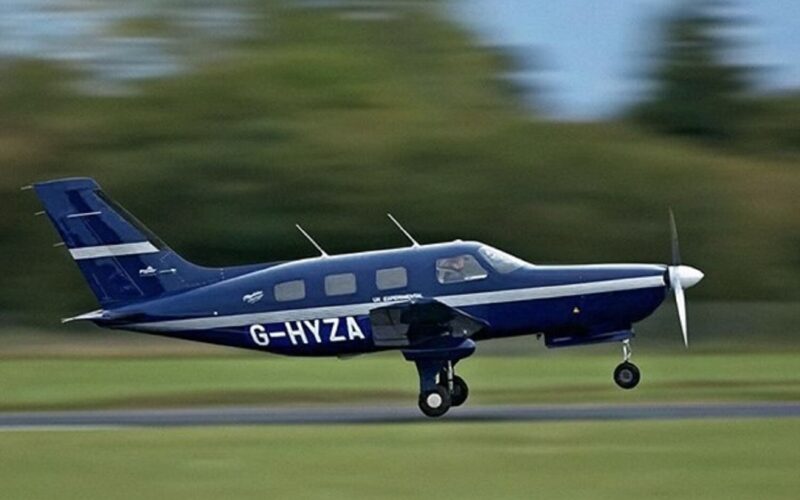The Piper Malibu Mirage equipped with a hydrogen engine developed by ZeroAvia crash-landed during a test flight on April 29, 2021. The aircraft, registered as G-HYZA, was forced to make an emergency landing in a field near Cranfield Airport, about 100 kilometers (62 miles) north of London, United Kingdom. No injuries were reported, but the plane was slightly damaged.
“The aircraft landed normally on its wheels in a flat grass field and almost came to a stop, but was damaged as it caught the left main gear and wing in the uneven terrain at the end of the field at low speed,” ZeroAvia reported. “After the landing, the crew were able to safeguard the battery and safely release hydrogen from the onboard tanks, following ZeroAvia safety protocol; no fluid leaks were observed at the time.”
An investigation was opened by the Air Accident Investigation Branch of the British Department for Transport.
The six-seater Piper used as a demonstrator for the HyFlyer project carried out its maiden flight fitted with a purely electric motor in June 2020. The aircraft made its first flight powered by a hydrogen fuel cell in September of the same year. According to ZeroAvia, the incident took place during the 6th flight in this configuration.
Hydrogen is considered as a possible solution for manufacturers to decarbonize aviation, as the only byproducts of that energy are water and heat. ZeroAvia ambitions to develop an aircraft with a fuel cell engine that can transport 10 to 20 people for regional flights of up to 800 kilometers (500 miles), as well as an engine capable of powering a 50-or-plus seat aircraft. While the incident will disrupt the demonstration campaign, the manufacturer said the two developments should not be affected.

